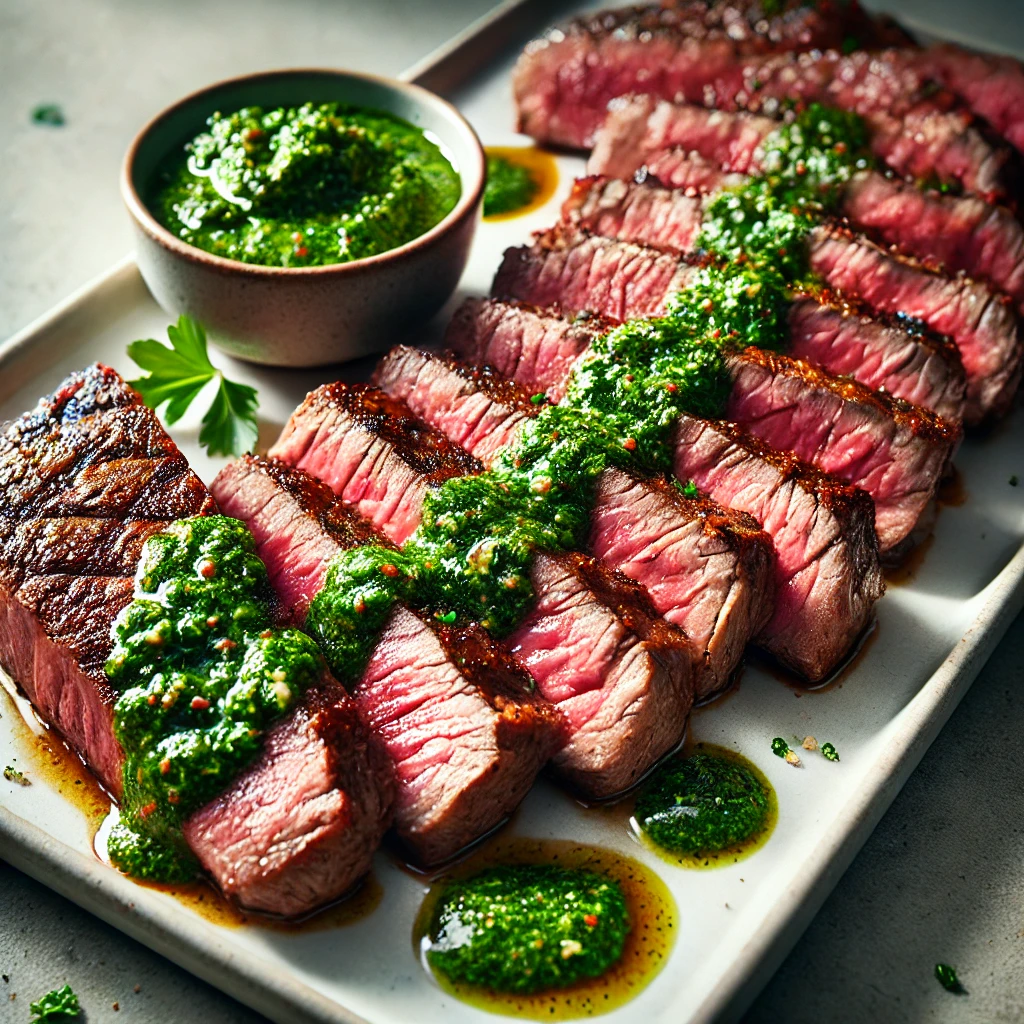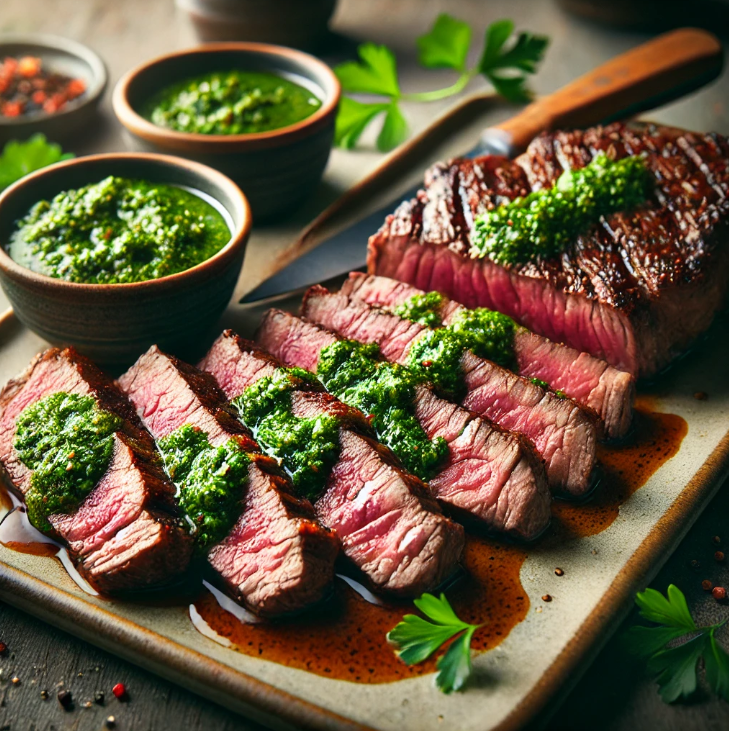If you’re on the hunt for a flavorful, tender, and versatile cut of beef, Coulotte Steak might just be your new favorite. Known for its rich marbling and signature fat cap, this steak is a hidden gem that deserves more attention. Popular in Brazilian churrasco (barbecue), Coulotte Steak is beloved for its bold flavor and juicy texture when cooked right. Whether you’re grilling it over an open flame, roasting it to perfection, or adding it to international dishes, this cut offers endless culinary possibilities.
In this article, we’ll dive deep into everything you need to know about Coulotte Steak—what it is, how to cook it, and even common mistakes to avoid. Ready to take your steak game to the next level? Let’s get started.
Table of Contents
What Is Coulotte Steak?
Definition and Origin of Coulotte Steak
Coulotte Steak, also called top sirloin cap or picanha, is a boneless cut that comes from the top of the sirloin primal. What sets it apart is its beautiful fat cap, which adds incredible flavor and juiciness during cooking. This cut is particularly popular in South America, especially in Brazilian cuisine, where it’s a staple at churrascarias.
The name “Coulotte” is thought to have French origins, possibly derived from “culotte,” meaning “cap.” While its name varies globally, one thing remains the same—it’s a steak that delivers big on taste and texture.
Size, Taste, and Marbling
A typical Coulotte Steak is moderately sized, usually around 1–2 inches thick, and boasts a generous amount of marbling. This marbling, combined with the fat cap, makes it rich and buttery when cooked correctly. The taste is beefy yet refined, making it a crowd-pleaser for steak lovers and foodies alike.
Why It’s Popular in Brazilian Cuisine
In Brazilian barbecue, Coulotte Steak (referred to as picanha) is often skewered, grilled, and sliced thinly at the table. Its natural fat cap bastes the meat as it cooks, creating a smoky, caramelized crust that’s absolutely irresistible. It’s no wonder this cut is a star at rodizio-style steakhouses, where diners enjoy an endless parade of flame-grilled meats.
Nutritional Benefits of Coulotte Steak
High-Protein, Low-Fat Content
When it comes to nutrition, Coulotte Steak strikes a perfect balance. Packed with protein, it’s an excellent choice for anyone looking to build or maintain muscle. A single serving provides around 22–25 grams of protein, making it a powerhouse for active lifestyles. Despite its rich flavor, Coulotte Steak has moderate fat content, especially when you trim the outer fat cap after cooking. This makes it a leaner choice compared to cuts like ribeye, without compromising taste.
Packed with Vitamins and Minerals
Coulotte Steak is more than just protein—it’s loaded with essential nutrients. It’s a great source of iron, which helps transport oxygen in the blood, and zinc, which supports immune function and skin health. Additionally, this cut is rich in B vitamins like B12, which play a key role in energy production and brain function. Including Coulotte Steak in your meals can be a delicious way to meet your nutritional needs while savoring a tender, flavorful cut of beef.
How to Cook It Perfectly
Grilling Coulotte Steak: Tips and Techniques
Grilling is one of the best ways to showcase the natural flavors of Coulotte Steak. Start by leaving the fat cap intact—it will render and baste the meat as it cooks. Preheat your grill to high heat, ensuring a hot surface for searing. Place the steak fat-side down first, allowing the fat to crisp up and release its juices. Then, flip and cook for 4–6 minutes per side, depending on your desired doneness. Rest the steak for 5–10 minutes before slicing against the grain.
Pan-Searing Coulotte Steak
No grill? No problem! You can achieve an equally delicious result by pan-searing your Coulotte Steak. Heat a cast-iron skillet over medium-high heat and add a splash of oil. Place the steak fat-side down first to render the fat and develop a crispy crust. Flip the steak and sear the other side for 3–5 minutes. For thicker cuts, reduce the heat and cook for a few extra minutes. Use a meat thermometer to check for doneness—130°F for medium-rare is ideal.
Roasting Coulotte Steak in the Oven
Roasting is another fantastic way to cook Coulotte Steak, especially for larger cuts. Preheat your oven to 375°F. Start by searing the steak in a hot skillet for 2–3 minutes per side to lock in flavor. Then, transfer it to the oven and roast until the internal temperature reaches your desired doneness. Let it rest before slicing to ensure the juices redistribute evenly.
Slicing with the Grain in Mind
No matter how you cook it, slicing it properly is crucial for tenderness. Always cut against the grain to shorten the muscle fibers. This simple technique makes a big difference, transforming your steak into a melt-in-your-mouth experience.
Best Marinades and Seasonings for Coulotte Steak
Traditional Brazilian Marinades
When it comes to Coulotte Steak, a Brazilian-style marinade can take the flavor to the next level. A classic blend of olive oil, garlic, lime juice, and salt enhances the steak’s natural richness while keeping it tender and juicy. Let the steak marinate for at least 2 hours to allow the flavors to penetrate deeply. This traditional preparation method is a nod to its popularity in Brazilian churrasco, where bold flavors shine.
Dry Rubs for Enhanced Flavo
If you prefer simplicity, a dry rub works wonders on Coulotte Steak. A mix of smoked paprika, black pepper, garlic powder, and a pinch of cayenne adds smokiness and depth to the meat. Rub the spices generously onto the steak, ensuring every inch is coated, then let it sit for 30 minutes before cooking. The result? A caramelized crust that locks in all the juices.
Pairing It with Sauces
A good sauce can elevate your Coulotte Steak from great to unforgettable. Chimichurri, made with fresh parsley, garlic, olive oil, and vinegar, is a classic choice that complements the steak’s beefy flavor. For a richer option, try a creamy peppercorn sauce or a red wine reduction. Drizzle the sauce lightly over the steak or serve it on the side for dipping.
For more delicious recipes, check out Recipes to Explore.
Creative Serving Ideas
Classic Steak and Sides
It pairs beautifully with classic steakhouse sides. Serve it alongside creamy mashed potatoes, sautéed garlic spinach, or roasted asparagus. A dollop of herb butter on top adds a touch of decadence, while the sides provide a comforting balance to the steak’s bold flavor.
International Cuisine Inspirations
This versatile cut is perfect for dishes inspired by global cuisines. In Brazilian churrasco, it’s often skewered, grilled, and served thinly sliced with farofa (toasted cassava flour). For a Tex-Mex twist, slice the steak into strips and use it in fajitas or tacos with onions, peppers, and salsa. It also works well in Asian stir-fries, paired with soy sauce, ginger, and fresh vegetables.
Salad and Bowl Options
For a lighter meal, use thin slices of Coulotte Steak to top a salad or grain bowl. Combine the steak with fresh greens, cherry tomatoes, avocado, and a tangy balsamic dressing for a refreshing dish. Or layer it over quinoa or rice with grilled veggies and a drizzle of chimichurri for a hearty yet balanced option.
Common Mistakes to Avoid
Overcooking the Steak
One of the most common mistakes when preparing Coulotte Steak is overcooking it. Since this cut is lean with moderate fat content, cooking it past medium can lead to a dry, tough texture. To avoid this, always use a meat thermometer. For the best results, aim for an internal temperature of 130°F for medium-rare or 140°F for medium. Keep in mind that the steak will continue to cook slightly as it rests.
Neglecting the Fat Cap
The fat cap on Coulotte Steak is one of its standout features, yet many cooks make the mistake of trimming it before cooking. This outer layer of fat melts during cooking, infusing the meat with rich, buttery flavor and preventing it from drying out. Instead of trimming it, start cooking the steak fat-side down to render and crisp the fat, creating a delicious crust.
FAQs About Coulotte Steak
What’s the Difference Between Coulotte and Picanha?
Although Coulotte Steak and picanha come from the same cut, the distinction often lies in the preparation. In Brazilian cuisine, picanha is typically cooked whole, skewered, and grilled. Coulotte Steak, on the other hand, is often cut into smaller portions and cooked as individual steaks. Both share the same signature fat cap and bold flavor.
How Do You Store It ?
To store it, keep it in its original packaging if you plan to use it within 2–3 days. For longer storage, wrap the steak tightly in plastic wrap, followed by aluminum foil, and place it in the freezer. Thaw it overnight in the fridge before cooking to preserve its texture and flavor.
Is it Tender?
Yes! While it’s not as tender as a filet mignon, Coulotte Steak is incredibly flavorful and tender when cooked properly. Its loose grain structure makes it ideal for grilling, pan-searing, or roasting, especially if sliced against the grain to maximize tenderness.
For more on traditional cooking methods that enhance beef flavor, you might enjoy our feature on Hawaiian Beef Stew, which explores slow-cooking techniques.
Final Tips and Tricks for Perfect Coulotte Steak
Investing in Quality Steak
The key to making an unforgettable Coulotte Steak starts with selecting a high-quality cut. Look for steaks with even marbling and a thick, intact fat cap. Visiting a trusted butcher or specialty meat market ensures you’re getting the best product. If you’re buying frozen, choose vacuum-sealed packaging to maintain freshness.
Resting and Slicing Tips
Resting your Coulotte Steak after cooking is essential for retaining its juices. Let the steak rest for 5–10 minutes before slicing to allow the moisture to redistribute evenly. And don’t forget: slicing against the grain is crucial. This technique shortens the muscle fibers, resulting in tender, melt-in-your-mouth bites every time.
Experimenting with Cooking Techniques
While grilling and pan-searing are popular methods, don’t hesitate to experiment with other techniques like sous vide or smoking. Sous vide ensures precise temperature control, while smoking imparts a rich, smoky flavor that pairs beautifully with the steak’s natural beefiness. Trying different methods can help you discover your favorite way to prepare Coulotte Steak.
Bonus Recipe Variations for Coulotte Steak
Brazilian Grilled Coulotte Steak
Bring the churrasco experience home by grilling it Brazilian-style. Marinate the steak with olive oil, garlic, and coarse salt. Skewer it in a horseshoe shape, fat-side out, and grill over high heat until the fat crisps up beautifully. Slice thinly and serve with chimichurri or fresh lime wedges for an authentic touch.
Garlic Butter Coulotte Steak
For a rich and indulgent twist, pan-sear Coulotte Steak and finish it with a garlic butter baste. Melt butter in the pan with crushed garlic and fresh thyme during the last minute of cooking. Spoon the infused butter over the steak for a flavorful glaze. Pair with roasted potatoes for a hearty meal.
Asian-Inspired Stir-Fry
Slice it into thin strips and marinate it in soy sauce, ginger, garlic, and sesame oil. Stir-fry the steak in a hot wok, then toss with fresh vegetables like bell peppers, broccoli, and snap peas. Serve over steamed jasmine rice for a quick and delicious meal.
For a side dish that pairs perfectly with it, try our creamy and flavorful Mashed Potatoes and Gravy.
For more inspiration and creative ways to cook Coulotte Steak, check out the recipes and tips on Bon Appétit. Their collection of steak recipes and expert advice will help you perfect this flavorful cut and impress at your next meal!


